Automotive
-
-
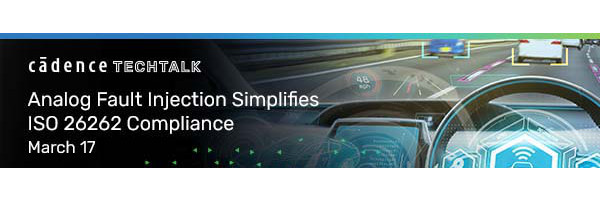
Analog Fault Injection Simplifies ISO 26262 Compliance
As the automotive market moves toward electrified drivetrains and autonomous driving systems, chip makers increasingly need to design integrated mixed-signal chips that meet the ISO 26262 automotive certification. With these complex designs, designers will require automation to overcome the limits of using expert judgment to ensure compliance. Integrating functional safety analysis into their existing design… Analog Fault Injection Simplifies ISO 26262 Compliance
-
-

AutoSense Detroit 2022
Michigan Science Center 5020 John R St, Detroit, MI, United StatesWe can’t wait to bring our community back together at the Michigan Science Center in Detroit. Join us 10-12 May to hear from over 50 speakers from companies across the autonomous vehicle perception supply chain, including AMD, BrainChip, Indie Semiconductor, ON Semiconductor, Siemens, STMicroelectronics, Cadence, Valeo, MOBIS, Synopsys, Veoneer, General Motors and Baraja. With a… AutoSense Detroit 2022
-
-

From Virtual ECU to Real Vehicle: Continuous Testing of Functional Requirements
Today, most of the software functions in a car can be tested efficiently using virtual ECU models and DevOps engineering methods. However, final acceptance tests with real vehicles are still mandatory, even though they are expensive and time-consuming. The prevalent problem is the gap between automated virtual methods and manual testing, which further increases costs… From Virtual ECU to Real Vehicle: Continuous Testing of Functional Requirements
-
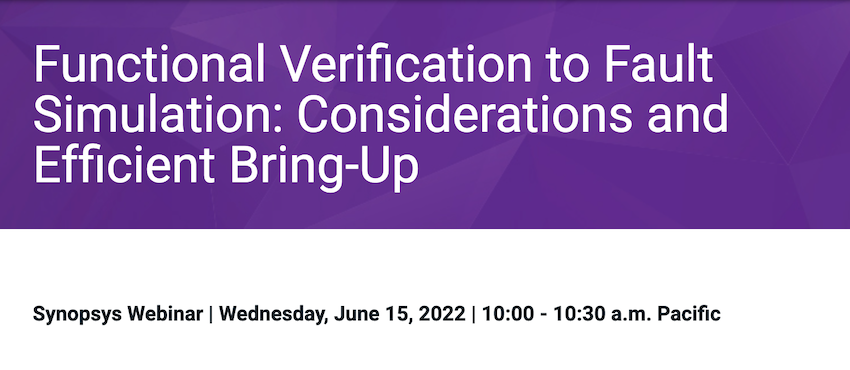
Functional Verification to Fault Simulation: Considerations and Efficient Bring-Up
Electronic systems in automobiles are growing rapidly in size, complexity, and critical functionality. As a result, functional safety verification is emerging as an essential requirement for automotive SoC and IP designs. In order to assure that even the most stringent safety standards are met at a faster pace, comprehensive and fast fault injection and simulation… Functional Verification to Fault Simulation: Considerations and Efficient Bring-Up
-
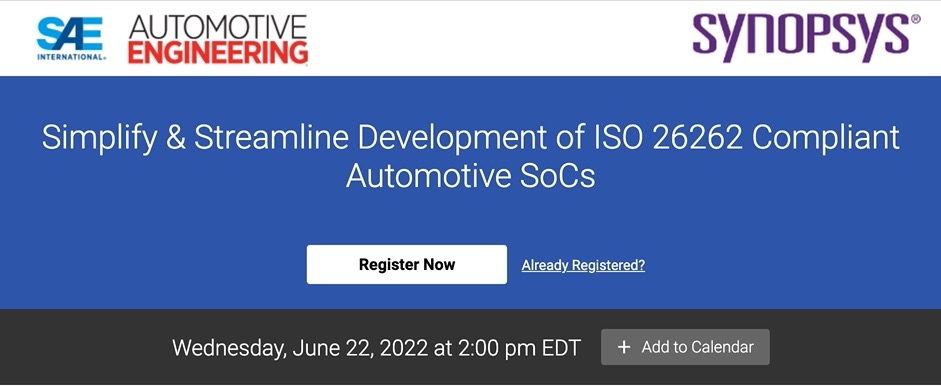
Simplify & Streamline Development of ISO 26262 Compliant Automotive SoCs
Standards such as ISO 26262 define strict requirements, processes, and methods that all stakeholders – IP vendors, sub-system developers, and semiconductor SoC and system developers – must abide by when designing safety-critical automotive products. One such requirement is the Development Interface Agreement (DIA), which defines the interactions, interfaces, responsibilities, dependencies, and work products exchanged between… Simplify & Streamline Development of ISO 26262 Compliant Automotive SoCs
-
-
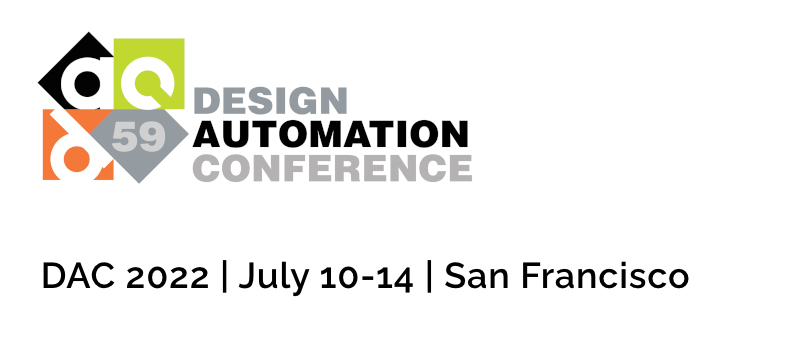
Design Automation Conference, 2022
Moscone Center 747 Howard Street, San Francisco, CA, United StatesThe Design Automation Conference (DAC) is recognized as the premier event for the design and design automation of electronic chips to systems. DAC offers outstanding training, education, exhibits and superb networking opportunities for designers, researchers, tool developers and vendors. The conference is sponsored by the Association for Computing Machinery (ACM) and the Institute of Electrical… Design Automation Conference, 2022
-
-

AESIN Conference
The National Motorcycle Museum B92 OEJ, Solihull, United KingdomWe are delighted to announce the AESIN Conference 2022 to be held on 1 September. This year’s AESIN theme is “Championing Champions.” We will be celebrating UK’s outstanding automotive electronics related organisations as we bring technology to the forefront. The conference will provide a platform for technology champions to share technical expertise and innovation with… AESIN Conference
-
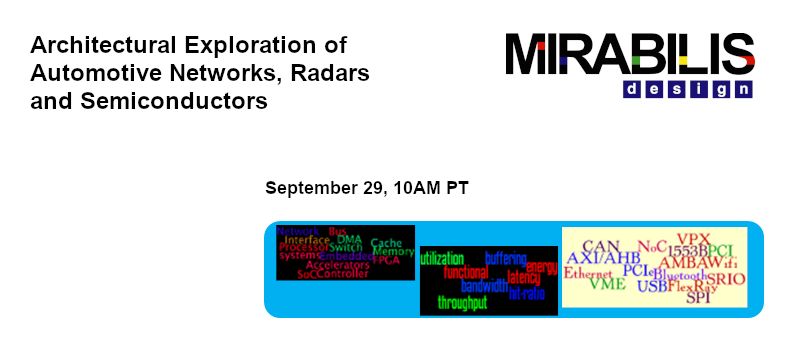
Architecture Exploration of Automotive Networks, Radars, and Semiconductors
The buzzwords of 2022 are autonomous driving, radars, and semiconductor and they are all similar in more than one-way. All have protocols, schedulers, sensors, high performance computing, software, networks, interfaces, antennas, and attenuators. VisualSim Architect is used to architect and verify all these applications. Join us for this Webinar on Commonality in the Architecture Exploration… Architecture Exploration of Automotive Networks, Radars, and Semiconductors
-
-

Everything You Need to Know About Virtual ECU Abstraction Levels
Growing electronic/electrical (E/E) architecture complexity and software content in modern vehicles has propelled the use of virtualization-based testing to develop and validate functions and software components more effectively. The simulation of electronic control units (ECUs) as virtual ECUs (vECUs) has found rapid adoption in several phases of automotive development. This 30-minute Webinar will provide a… Everything You Need to Know About Virtual ECU Abstraction Levels
-
-

Ethernet & IP @ Automotive Technology Day
PACIFICO Yokohama North 1 Chome-1-2 Minatomirai, Nishi Ward, Yokohama, JapanOnsite registration may be limited, register now to be sure to get admission. The 2022 IEEE SA Ethernet & IP @ Automotive Technology Day (E&IP@ATD) is the premier venue for automobile manufacturers, suppliers, semiconductor vendors, tool providers, engineers, scientists, educators, and the media to share ground breaking ideas along with implementation strategies and applications related… Ethernet & IP @ Automotive Technology Day
-
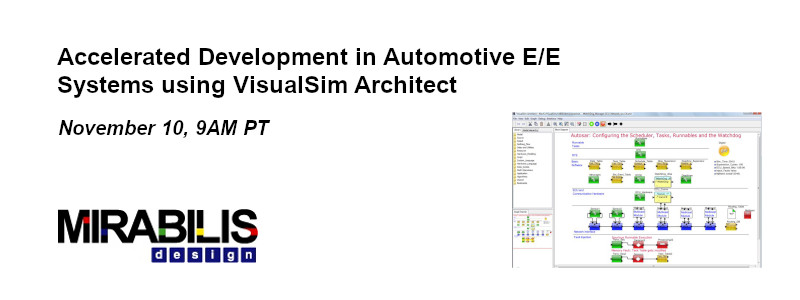
Accelerated development in Automotive E/E Systems using VisualSim Architect
We have put together a webinar on November 10th titled: Accelerated development in Automotive E/E Systems using VisualSim Architect . We will provide an introduction to the available features and utilities in VisualSim architect for Automotive Networking, Hardware ECU and Software design exploration. We will present use cases in ADAS, braking, FuSa, AI accelerator enhanced… Accelerated development in Automotive E/E Systems using VisualSim Architect
-
-

How to Achieve Seamless Deployment of Level 3 Virtual ECUs for Automotive Digital Twins
Driven by the trend towards software-defined vehicles (SDV), more complex software stacks are now being integrated into innovative automotive E/E architectures. Today the early integration testing of automotive software is already supported by using virtual ECUs (vECUs). However, the production basic software (BSW) is often not included because the virtualization of the hardware-specific microcontroller abstraction layer (MCAL)… How to Achieve Seamless Deployment of Level 3 Virtual ECUs for Automotive Digital Twins